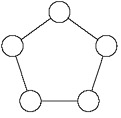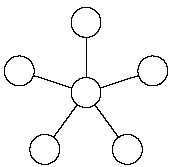Chapter 5: Oh, What a Tangled Web We Weave-Cables, Adapters, and Other Stuff
Cable is the plumbing of your network. In fact, working with network cable is a lot like working with pipe: You have to use the right pipe (cable), the right valves and connectors (switches and routers), and the right fixtures (network interface cards).
| TECHNICAL STUFF | Network cables have one more advantage over pipes: You don't get wet when they leak. |
This chapter tells you far more about network cables than you probably need to know. I introduce you to Ethernet, the most common system of network cabling for small networks. Then you find out how to work with the cables used to wire an Ethernet network. You also find out how to install a network interface card, which enables you to connect the cables to your computer.
What Is Ethernet?
Ethernet is a standardized way of connecting computers to create a network.
| TECHNICAL STUFF |
A networking book wouldn't be complete without the usual textbook description of the three basic network topologies. One type of network topology is a bus, in which network nodes (that is, computers) are strung together in a line, like this: A bus is the simplest type of topology, but it has some drawbacks. If the cable breaks somewhere in the middle, the whole network breaks. A second type of topology is the ring: A ring is very much like a bus except with no end to the line: The last node on the line is connected to the first node, forming an endless loop. A third type of topology is a star: In a star network, all the nodes are connected to a central hub. In effect, each node has an independent connection to the network, so a break in one cable doesn't affect the others. Ethernet networks are based on a bus design. However, fancy cabling tricks make an Ethernet network appear to be wired like a star when twisted-pair cable is used. |
You can think of Ethernet as a kind of municipal building code for networks: It specifies what kind of cables to use, how to connect the cables, how long the cables can be, how computers transmit data to one another by using the cables, and more.
| TECHNICAL STUFF | Although Ethernet is now the overwhelming choice for networking, that wasn't always the case. In ye olde days, Ethernet had two significant competitors:
|
But the vast majority of business networks use Ethernet. You can purchase inexpensive Ethernet components and cables at almost any store that sells electronics. It's really the only choice for new networks-small or large.
Here are a few tidbits you're likely to run into at parties where the conversation is about Ethernet standards:
-
Ethernet is a set of standards for the infrastructure on which a network is built. All the network operating systems that I discuss in this book-including all versions of Windows, NetWare, Linux, and Macintosh OS/X-can operate on an Ethernet network. If you build your network on a solid Ethernet base, you can change network operating systems later.
-
Ethernet is often referred to by network gurus as 802.3 (pronounced "eight-oh-two-dot-three"), which is the official designation used by the IEEE (pronounced "eye-triple-e," not "aieeee!"), a group of electrical engineers who wear bow ties and have nothing better to do than argue all day long about things like inductance and cross-talk-and it's a good thing they do. If not for them, you couldn't mix and match Ethernet components made by different companies.
-
The original vintage Ethernet transmits data at a rate of 10 million bits per second, or 10 Mbps. (Mbps is usually pronounced "megabits per second.") Because 8 bits are in a byte, that translates into roughly 1.2 million bytes per second. In practice, Ethernet can't move information that fast because data must be transmitted in packages of no more than 1,500 bytes, called packets. So, 150KB of information has to be split into 100 packets.
REMEMBER Ethernet's transmission speed has nothing to do with how fast electrical signals move on the cable. The electrical signals travel at about 70 percent of the speed of light, or as Captain Picard would say, "Warp factor point-seven-oh."
-
The newer version of Ethernet, and now the most common, is Fast Ethernet, or 100 Mbps Ethernet, moves data ten times as fast as normal Ethernet. Because Fast Ethernet moves data at a whopping 100 Mbps and uses twisted-pair cabling, it's often called 100BaseT (and sometimes 100BaseT X).
-
An even faster version of Ethernet, known as Gigabit Ethernet, is also available. Gigabit Ethernet components were once expensive enough that they were used only for speed-critical parts of the network, such as connecting servers to the network switches. However, gigabit Ethernet has dropped in price enough that many desktop computers are connected to the network at gigabit speed.
-
Most networking components that you can buy these days support both 10 Mbps and 100 Mbps Ethernet. These components are called 10/100 Mbps components because they support both speeds. Network components that support all three speeds are called 10/100/1000 Mbps components.

